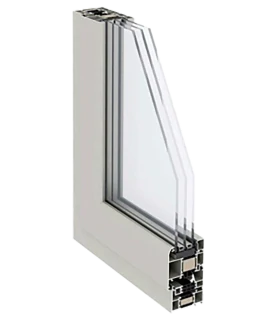Tips for Installing Rollers on Sliding Screen Doors Easily and Effectively
Installing Sliding Screen Door Rollers A Comprehensive Guide
Sliding screen doors are an essential addition to any home, allowing fresh air and natural light to enter while keeping pesky insects at bay. However, over time, the rollers that facilitate the smooth operation of these doors can become worn out or damaged. Replacing the sliding screen door rollers can significantly improve functionality and extend the lifespan of your door. This guide will walk you through the steps to install sliding screen door rollers, helping you enhance your home’s comfort and ambiance.
Tools and Materials Needed
Before starting the installation process, gather the necessary tools and materials
1. Replacement rollers Ensure you have the correct size and type that matches your door. 2. Screwdriver A flathead or Phillips screwdriver, depending on your door’s screws. 3. Pliers For handling stubborn screws or fittings. 4. Measuring tape To check dimensions if needed. 5. Cleaning cloth To clean the door track and rollers before installation. 6. Lubricant A silicone-based lubricant for ensuring smooth movement.
Step-by-Step Installation
1. Remove the Sliding Screen Door - Begin by gently lifting the screen door off the track. Depending on your door’s design, you may need to tilt the door at a slight angle to clear the top track. - It’s advisable to have a second person assist you during this process to avoid any damage or accidents.
2. Inspect the Existing Rollers - Once the door is removed, inspect the existing rollers to see how they are attached. Most rollers are held in place by screws. Take note of how the old rollers are installed, as this will make it easier to install the new ones.
installing sliding screen door rollers

3. Remove the Old Rollers - Using your screwdriver, remove the screws from the old rollers. If the screws are rusty or stripped, you might need pliers to loosen them. - After removing the screws, carefully detach the old rollers from the door frame.
4. Clean the Door Track - With the rollers removed, take a moment to clean the door track. Use a cleaning cloth to remove dust, debris, and other obstacles that may hinder the door’s sliding motion. A clean track will ensure that the new rollers perform optimally.
5. Install the New Rollers - Take your new rollers and position them in the same location as the old ones. Align the holes and secure them with screws, making sure they are tight but not overly tight to avoid damaging the roller.
6. Reinstall the Sliding Screen Door - With the new rollers in place, carefully lift the screen door back onto the track. Start by placing the top edge into the track and then lower the door until the bottom rollers align with the bottom track. - Make necessary adjustments to ensure the door hangs evenly.
7. Test the Door’s Operation - Once the door is reinstalled, slide it open and closed several times to test its operation. If it moves smoothly, you’ve successfully installed the new rollers. If not, you may need to make minor adjustments to the roller height.
8. Apply Lubricant - For optimal performance, apply a silicone-based lubricant along the track and onto the new rollers. This will enhance smooth movement and reduce friction, prolonging the life of your rollers.
Conclusion
Installing sliding screen door rollers is a manageable DIY project that can greatly improve your door’s functionality. With the right tools and a little patience, you can enhance the living environment of your home. Regular maintenance, including checking and replacing rollers, will ensure that your sliding screen door continues to provide comfort and convenience for years to come. So, roll up your sleeves and enjoy the fresh air without the bugs!
-
Wrought Iron Components: Timeless Elegance and Structural StrengthNewsJul.28,2025
-
Window Hardware Essentials: Rollers, Handles, and Locking SolutionsNewsJul.28,2025
-
Small Agricultural Processing Machines: Corn Threshers, Cassava Chippers, Grain Peelers & Chaff CuttersNewsJul.28,2025
-
Sliding Rollers: Smooth, Silent, and Built to LastNewsJul.28,2025
-
Cast Iron Stoves: Timeless Heating with Modern EfficiencyNewsJul.28,2025
-
Cast Iron Pipe and Fitting: Durable, Fire-Resistant Solutions for Plumbing and DrainageNewsJul.28,2025
-
 Wrought Iron Components: Timeless Elegance and Structural StrengthJul-28-2025Wrought Iron Components: Timeless Elegance and Structural Strength
Wrought Iron Components: Timeless Elegance and Structural StrengthJul-28-2025Wrought Iron Components: Timeless Elegance and Structural Strength -
 Window Hardware Essentials: Rollers, Handles, and Locking SolutionsJul-28-2025Window Hardware Essentials: Rollers, Handles, and Locking Solutions
Window Hardware Essentials: Rollers, Handles, and Locking SolutionsJul-28-2025Window Hardware Essentials: Rollers, Handles, and Locking Solutions -
 Small Agricultural Processing Machines: Corn Threshers, Cassava Chippers, Grain Peelers & Chaff CuttersJul-28-2025Small Agricultural Processing Machines: Corn Threshers, Cassava Chippers, Grain Peelers & Chaff Cutters
Small Agricultural Processing Machines: Corn Threshers, Cassava Chippers, Grain Peelers & Chaff CuttersJul-28-2025Small Agricultural Processing Machines: Corn Threshers, Cassava Chippers, Grain Peelers & Chaff Cutters












